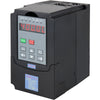- Joined
- 18 Feb 2007
- Messages
- 1,410
- Reaction score
- 79
- Country

Why do Manufacturers invariably use Commutator ac motors rather than Single Phase capacitor start induction motors. Clearly the induction motor does not need a Commutator or brushes therefore should be cheaper and better to use.

